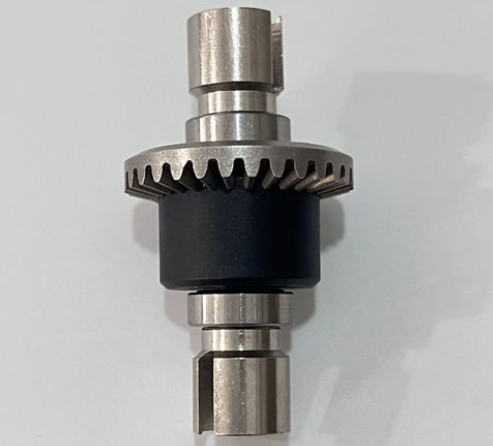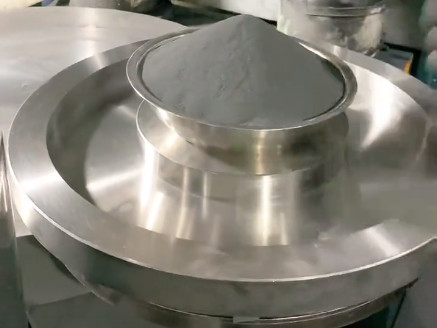Powder alloys, formed by blending elemental or alloyed powders, are critical in advanced manufacturing processes like powder metallurgy (PM) and additive manufacturing (AM). These materials enable the production of components with precise geometries, tailored properties, and high performance. This article provides a technical overview of powder alloys, focusing on their composition, production methods, characterization techniques, and applications, with detailed parameters to guide professionals in material selection and process optimization.
Composition of Powder Alloys
Powder alloys are typically composed of metallic powders, either elemental or pre-alloyed, designed to achieve specific mechanical, thermal, or chemical properties. The choice of composition depends on the intended application, such as structural components, aerospace parts, or biomedical implants. Common base metals include iron, aluminum, titanium, and nickel, often alloyed with elements like carbon, chromium, or cobalt to enhance properties such as strength, corrosion resistance, or thermal stability.
For example, stainless steel powders (e.g., 316L) contain iron with 16-18% chromium, 10-14% nickel, and 2-3% molybdenum. Titanium alloys like Ti-6Al-4V include 6% aluminum and 4% vanadium, balancing strength and biocompatibility. The precise control of alloying elements ensures consistent performance in the final component.
| Alloy Type | Main Components | Key Properties |
|---|---|---|
| 316L Stainless Steel | Fe, 16-18% Cr, 10-14% Ni, 2-3% Mo | Corrosion resistance, ductility |
| Ti-6Al-4V | Ti, 6% Al, 4% V | High strength, biocompatibility |
| AlSi10Mg | Al, 9-11% Si, 0.2-0.45% Mg | Lightweight, good castability |
Powder Production Methods
The production of powder alloys is a critical step that influences particle characteristics and final component quality. Several methods are used to produce metal powders, each with distinct parameters affecting particle size, morphology, and flowability.
Gas Atomization
Gas atomization involves melting a metal alloy and dispersing it into fine droplets using a high-pressure gas stream (e.g., nitrogen or argon). The droplets solidify into spherical particles. Key parameters include:
- Melt Temperature: Typically 100-200°C above the alloy’s melting point (e.g., 1,550°C for stainless steel).
- Gas Pressure: 2-10 MPa, influencing particle size (higher pressure yields finer particles).
- Nozzle Diameter: 1-5 mm, affecting droplet size and distribution.
Gas-atomized powders typically have a particle size distribution (PSD) of 10-150 µm, with D50 values (median particle size) around 30-50 µm for additive manufacturing.
Water Atomization
Water atomization uses high-pressure water jets to break molten metal into particles. It is cost-effective but produces less spherical particles compared to gas atomization. Parameters include:
- Water Pressure: 10-50 MPa.
- Melt Flow Rate: 10-100 kg/min.
- Particle Size: 50-300 µm, with broader PSD than gas atomization.
Water-atomized powders are often used in press-and-sinter processes due to their irregular shapes, which enhance green strength.
Mechanical Alloying
Mechanical alloying involves high-energy ball milling to blend elemental powders, creating alloyed particles through repeated deformation and welding. Key parameters include:
- Milling Time: 10-50 hours.
- Ball-to-Powder Ratio: 10:1 to 20:1.
- Milling Speed: 200-400 rpm.
This method is suitable for producing nanostructured or amorphous powders for specialized applications.
Characterization of Powder Alloys
Characterization ensures powder alloys meet the requirements for specific manufacturing processes. Key properties include particle size distribution, morphology, flowability, and chemical composition.
Particle Size Distribution (PSD)
PSD is measured using laser diffraction or sieve analysis. For laser powder bed fusion (L-PBF), powders typically range from 15-45 µm to ensure good layer spreading. The D10, D50, and D90 percentiles indicate the size below which 10%, 50%, and 90% of particles fall. For example, gas-atomized AlSi10Mg powders may have D10 = 10 µm, D50 = 30 µm, and D90 = 50 µm.
Morphology
Particle shape is analyzed using scanning electron microscopy (SEM). Spherical particles (from gas atomization) improve flowability and packing density, while irregular particles (from water atomization) enhance mechanical interlocking during compaction.
Flowability
Flowability is assessed using the Hall flowmeter, measuring the time for 50 g of powder to flow through a funnel. Typical values for L-PBF powders are 10-20 s/50 g, indicating good flow for consistent layer deposition.
Chemical Composition
Techniques like X-ray fluorescence (XRF) or inductively coupled plasma (ICP) verify alloy composition. For instance, Ti-6Al-4V powders must maintain aluminum and vanadium within 5.5-6.5% and 3.5-4.5%, respectively, to meet ASTM standards.
Applications of Powder Alloys
Powder alloys are used in diverse industries due to their ability to produce complex geometries and tailored properties. Below are key applications with specific examples.
Powder Metallurgy (PM)
PM involves compacting powders in a die and sintering at high temperatures (e.g., 1,100-1,300°C for steel) to bond particles. It is used for:
- Automotive Parts: Gears and bearings made from iron-based powders with 0.5-2% carbon for wear resistance.
- Tooling: High-speed steel powders for cutting tools with enhanced hardness (60-65 HRC).
PM achieves near-net-shape components, reducing machining costs.
Additive Manufacturing (AM)
AM, including laser powder bed fusion (L-PBF) and direct laser deposition (DLD), uses powder alloys to build complex parts layer by layer. Parameters for L-PBF include:
- Laser Power: 200-400 W.
- Scan Speed: 500-1,500 mm/s.
- Layer Thickness: 20-50 µm.
Applications include aerospace components (e.g., Ti-6Al-4V turbine blades) and medical implants (e.g., CoCrMo dental crowns).
Thermal Spraying
Thermal spraying deposits molten powder alloys onto surfaces to enhance wear or corrosion resistance. Nickel-based powders (e.g., NiCrBSi) are sprayed at 3,000-4,000°C, forming coatings 50-500 µm thick for turbine blades or industrial rollers.
Processing Parameters for Powder Alloys
Processing parameters significantly affect the quality of components made from powder alloys. The table below summarizes key parameters for common manufacturing processes.
| Process | Parameter | Typical Value |
|---|---|---|
| L-PBF | Laser Power | 200-400 W |
| L-PBF | Layer Thickness | 20-50 µm |
| PM Sintering | Temperature | 1,100-1,300°C |
| Thermal Spraying | Coating Thickness | 50-500 µm |
Safety and Handling Considerations
Handling powder alloys requires attention to safety due to their fine particle sizes. Inhalation risks are significant, particularly for powders below 10 µm, which can enter the respiratory system. Protective measures include:
- Ventilation: Use fume hoods or local exhaust systems.
- Personal Protective Equipment (PPE): Respirators, gloves, and eye protection.
- Storage: Store powders in sealed containers to prevent oxidation or contamination.
Additionally, reactive powders like titanium require inert atmospheres (e.g., argon) to prevent combustion during processing.

Conclusion
Powder alloys are integral to modern manufacturing, offering versatility in composition, production, and applications. By understanding their properties, production methods, and processing parameters, manufacturers can optimize component performance for industries ranging from automotive to aerospace. Proper characterization and handling ensure consistent quality and safety, making powder alloys a cornerstone of advanced material technologies.
